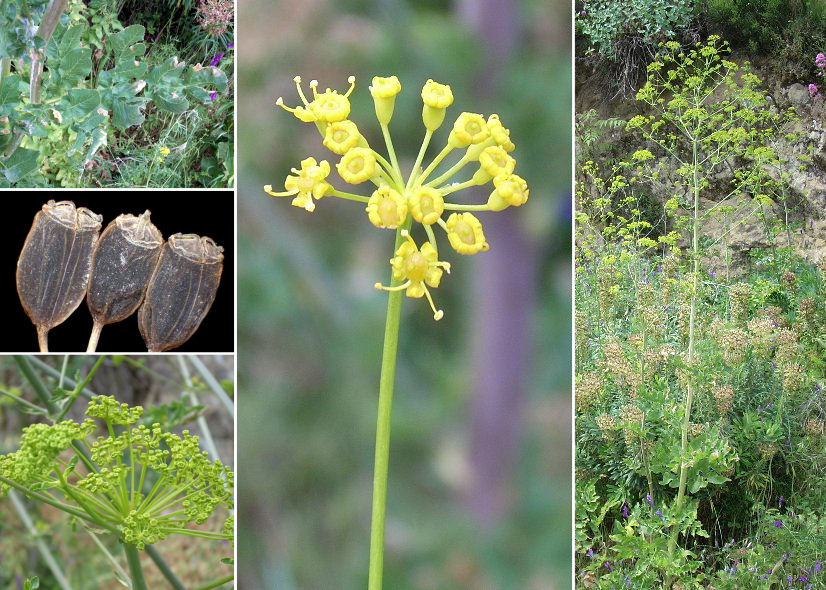Dies ist eine alte Version des Dokuments!
Opopanax chironium W.D.J.Koch - syn. Ferula opoponax Spreng.; Opopanax glabrum Bernh.; Opopanax opopanax Karst.; Pastinaca altissima Lam.; Selinum opopanax Crantz; Dorema chironia (L.) M. Hiroe; Laserpitium chironium Hill - apiaceae
Hercules-all-heal, Chiron Sweet Myrrh, Bisabol Myrrh, Gum Opopanax, Süße Myrrhe, Opobalsam
Perennial herb, up to 1m tall, native to the Western Mediterranean area; flowers yellow.
The plant is used to obtain a resin, opopanax: The thick rhizome or the lower portion of the stem are cut and the bleeding white resin dries in the air and turns yellowish brown. „In antiquity, panax or panacea was understood to be an ideal universal remedy for all conceivable diseases. 'Opo-panax' means a miracle cure in the form of a vegetable juice ('opós') or resin. The commercially available „Opopanax resin“, however, is usually obtained from Commiphora erythraea, a relatives of the frankincense tree.“
http://www.mittelmeerflora.de/Zweikeim/Apiaceae/opopanax.htm (retr.20251030)
„A consumable resin with a pleasant and persistent smell, with antispasmodic and deobstruent activities, also used in the treatment of menstrual disorders, asthma, chronic visceral afflictions can be extracted from O.chironium by cutting the plant at the base of a stem and sun-drying the juice that flows out…Hydrodistillation of O.chironium aerial parts (OC) gave a pale yellow oil…with (E)-β-damascenone (3.7%) and β-caryophyllene (3.2%) as main compounds, the principal product of the oil was cembrene (14.6%), the only diterpene detected. (E)-β-Ionone (3.7%) and (E)-geranylacetone (3.3%) were the main components of the carbonylic compounds class (11.7%)…“
[Maggio, Antonella, et al. „Chemical composition of the essential oils of three species of Apiaceae growing wild in Sicily: Bonannia graeca, Eryngium maritimum and Opopanax chironium.“ Natural Product Communications 8.6 (2013): 1934578×1300800640] PDF
Main components of O.chironium essential oil were hexyl valerate (18.5%), myristicin (16.5%), γ-elemene (16.0%), and octyl butyrate (12.0%).
[Babacan, Ebru Yüce, et al. „Yield and composition of the essential oil of the Opopanax genus in Turkey.“ Molecules 28.7 (2023): 3055]

Opopanax chironium (L.) W.D.J.Koch © Dipartimento di Scienze della Vita, Università degli Studi di Trieste
picture by Antonio Speranza, Andrea Moro CC BY-SA 4.0
Dryades project

Opopanax chironium, Via Fontana Terranova, Palena, Abruzzo, Italia (2025)
© Manuela Corti CC BY-SA 4.0 inaturalist.org
